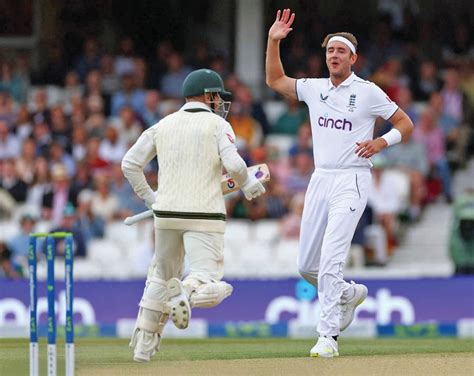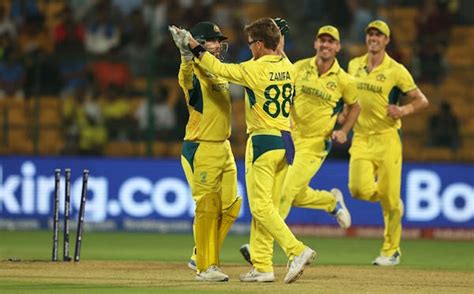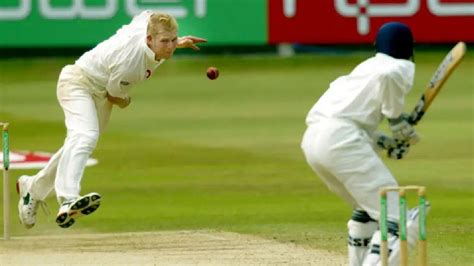Delve into the historical context, key factors, and fan culture influencing cricket rivalries, while exploring media roles and future trends in this captivating sport.Exploring The Rivalries In International Cricket
Cricket, often referred to as a religion in many parts of the world, is not just a game; it is a canvas painted with vibrant rivalries that ignite passions and create unforgettable memories. From the storied contests between historic rivals like India and Pakistan to the fierce battles of the Ashes, these rivalries transcend mere competition, weaving deep cultural and emotional ties. Understanding the historical context behind these intense clashes offers a richer appreciation of the game itself. As we delve into the key factors that fuel these rivalries, examine the impact of fan culture and media, and explore future trends, we uncover the intricate tapestry that makes international cricket an endlessly fascinating spectacle. Join us on this journey to explore the essence of cricket’s fiercest rivalries and what they mean to fans and players alike.
Understanding The Historical Context Of Cricket Rivalries
Cricket, often referred to as a sport steeped in tradition, has a rich historical context that has contributed significantly to its rivalries. These rivalries are not merely grounded in competition on the field, but also in the historical, cultural, and social narratives surrounding the teams involved.
One of the most notable historical rivalries is between England and Australia, famously known as the Ashes. This rivalry traces its roots back to 1882 when Australia defeated England at The Oval, leading to a satirical obituary published in a British newspaper that proclaimed the death of English cricket. The obituary humorously announced that English cricket had died and that the body will be cremated and the ashes taken to Australia, which ignited a profound competitive spirit between the two nations.
Moreover, the historical context of British colonialism plays a significant role in the rivalries involving teams from the subcontinent, particularly India and Pakistan. The partition of India in 1947 led to deep-rooted tensions, and these sentiments often surface during cricket matches. Hence, the India-Pakistan matches are not just cricket games but represent a clash of national identities and historical grievances.
The exploring the nuance behind these rivalries reveals how past events shape current dynamics on the cricket field. Other notable rivalries, such as those between South Africa and Australia, and the West Indies and England, also draw from historical events like apartheid and colonialism, respectively. Each match brings with it a reminder of the past, fueling not just competition but also a complex narrative that enhances the viewing experience for fans.
Thus, understanding the historical context of cricket rivalries provides a deeper appreciation for the sport. It highlights how cricket serves as a microcosm of larger societal issues and how each game is layered with meanings drawn from the past.
Key Factors That Fuel Intense Cricket Rivalries
Cricket is more than just a sport; it is a battleground where national pride, historical contexts, and passionate fanbases converge, creating intense rivalries. Understanding the key factors that fuel these rivalries is essential for grasping their significance in the realm of international cricket.
One primary factor is the historical context between countries. Historical events, both political and social, often shape the relationship between nations and manifest on the cricket field. Matches between countries with a contentious past, such as India and Pakistan, typically carry a weight that extends beyond the game itself. The stakes are heightened due to the underlying sentiments associated with these historical relations.
Another crucial factor is the competitive spirit that exists between nations. Teams that are consistently vying for the top positions in the world rankings often produce fierce competition. This drive to outperform each other not only enhances the excitement of the games but also intensifies fan allegiances, fueling the rivalry further.
Fan culture plays a pivotal role as well. The passionate support from fans can create an electric atmosphere, influencing players and teams alike. The roar of home crowds or the presence of traveling supporters adds pressure to the matches, deepening the rivalry. Fans often take pride in their team’s achievements and revel in their rival’s failures, leading to a cycle of hostility and camaraderie that solidifies these rivalries.
Moreover, the media portrayal of these matches can amplify tensions. Sensational coverage, along with analytical debates on sports channels, often exaggerate rivalries, turning ordinary encounters into high-stakes battles. Pundits and commentators frequently emphasize the significance of rival matches, further stoking the fires of competition.
The great performances by players in high-pressure situations often become legendary stories that enhance rivalries. Iconic matches, memorable play-offs, and nail-biting finishes are retold over and over, creating a mythos around these encounters that fans and players alike cherish. Such moments not only add to the competitiveness but also become a part of the larger narrative of the sport.
The intense rivalries in international cricket are fueled by a combination of historical dynamics, competitive spirit, passionate fan culture, media influence, and memorable performances. These elements not only define the encounters on the field but also shape the identity of the sport itself.
Exploring The Impact Of Fan Culture On Rivalries
In the realm of international cricket, fan culture plays a pivotal role in shaping and intensifying rivalries. The passion, loyalty, and enthusiasm of supporters can profoundly influence the dynamics of matches, creating an electrifying atmosphere that extends beyond the game itself.
The fierce devotion shown by fans often manifests in various ways, from elaborate displays in the stadium to vocal support or criticisms towards opposing teams. These expressions of allegiance can create a sense of identity and unity among fans, reinforcing the exploring the rivalry between nations.
Moreover, social media platforms have amplified the interaction between fans, allowing instant reactions and discussions on game performance, player conduct, and match outcomes. This immediacy can heighten emotions and escalate rivalries even further, as fans share their opinions, engage in banter, and rally behind their teams.
Below is a table highlighting the different facets of fan culture that contribute to cricket rivalries:
| Aspect of Fan Culture | Impact on Rivalries |
|---|---|
| Stadium Atmosphere | Creates a charged environment that can influence players’ performances. |
| Social Media Engagement | Facilitates real-time interactions, intensifying discussions and emotional responses. |
| National Pride | Fans often see victory as a reflection of their nation’s superiority, thus deepening rivalries. |
| Historical Narratives | Stories and legacies passed down through generations can elevate the stakes of matches. |
The fervor of cricket fans is a key element in the ever-evolving landscape of international rivalries. By exploring the intricate relationships between fan culture and cricket, we can better appreciate the emotional stakes that accompany each match, creating an engaging spectacle that captivates audiences worldwide.
Examining The Role Of Media In Shaping Rivalries
The media has played a pivotal role in exploring the dynamics of international cricket rivalries, amplifying the narratives, emotions, and controversies that surround them. From newspapers and radio broadcasts to television coverage and digital platforms, the way cricket is reported and discussed significantly impacts public perception and the intensity of rivalries.
One of the key functions of the media is to frame stories around matches, players, and historical events. By emphasizing specific rivalries, their historical context, and the stakes involved, media outlets can create a heightened sense of anticipation and competitiveness among fans. The portrayal of rivalries can also influence the psychology of players, often leading to pressure situations that can affect performance on the field.
Moreover, modern social media platforms have revolutionized the way fans engage with cricket. They enable instant commentary, provoke discussions, and even create viral moments that can further ignite rivalries. Fans often share their opinions, memes, and highlight reels, which contribute to the narrative surrounding matches and can perpetuate animosity or camaraderie between supporter groups.
Analytical pieces and opinion articles allow pundits to engage deeply with the historical rivalries, discussing past matches, memorable incidents, and individual player contributions. Such analysis not only informs fans but also promotes deeper emotional investment in their teams, thereby intensifying rivalries.
However, the media’s role isn’t without its challenges. Sensationalism and biased reporting can distort perceptions and sometimes exacerbate tensions among fans. Misunderstandings and inflamed emotions can lead to negative consequences, such as violence during match days or social media backlash. Thus, the media must balance its responsibility to report while being cautious of the potential ramifications of its portrayal of cricket rivalries.
The media significantly influences how rivalries are perceived and experienced in international cricket, making it a crucial element in the ongoing narrative of the sport. Understanding this relationship is essential for appreciating the depth of cricket rivalries today.
Future Trends In International Cricket Rivalries
As the landscape of cricket evolves, so do the dynamics of its rivalries. Several trends are emerging that are likely to shape the future of international cricket rivalries in significant ways.
Exploring The role of technology is paramount; innovations like virtual reality and analytics are enhancing fan engagement and providing deeper insights into player performances. As fans become more informed, their passion for the game and their rivalries evolves, making matchups even more charged.
Moreover, the impact of globalization cannot be overlooked. With more countries playing cricket at a competitive level, traditional rivalries are being challenged by new competitors. For instance, associate nations are increasingly becoming a formidable force, leading to fresh rivalries that may rival historical ones.
Another trend is the growing influence of social media, which amplifies fan interactions and provides a platform for passionate debates about rivalries. Players are also increasingly engaging with fans directly, adding a personal element to the competition that intensifies rivalries.
We may see a shift towards more international tournaments, which could lead to the revival of classic rivalries on a more frequent basis. Events like the ICC World Cup and T20 World Cup often reignite historical contests, and new formats may further build on this momentum.
As cricket continues to develop, fans and stakeholders alike will be eagerly watching how these trends impact the Exploring The future of international cricket rivalries.
Frequently Asked Questions
What are some of the most famous rivalries in international cricket?
Some of the most famous rivalries in international cricket include India vs. Pakistan, Australia vs. England (the Ashes), and South Africa vs. Australia.
How do rivalries impact the performance of teams in international cricket?
Rivalries often heighten the intensity of matches, leading players to perform at their best due to the pressure and stakes involved. This can result in memorable performances and nail-biting finishes.
What historical events have contributed to major cricketing rivalries?
Historical events such as wars, political tensions, and significant match outcomes have contributed to rivalries. For example, the partition of India and Pakistan intensified their cricket rivalry.
How do fans contribute to the intensity of rivalries in cricket?
Fans play a crucial role in intensifying rivalries by their passionate support, vocal displays during matches, and the longstanding traditions and narratives they create around these contests.
What role has media played in shaping cricket rivalries?
Media coverage amplifies rivalries by highlighting past encounters, focusing on key player matchups, and creating narratives that engage fans and build anticipation for upcoming matches.
Are there any emerging rivalries in international cricket?
Yes, emerging nations are creating new rivalries, such as Bangladesh vs. Sri Lanka and Afghanistan vs. other Asian teams, which are becoming increasingly competitive and significant.
How do rivalries influence the growth of cricket globally?
Rivalries create excitement and draw audience interest, helping to globalize the sport and encouraging young talent in various countries to engage with cricket.









